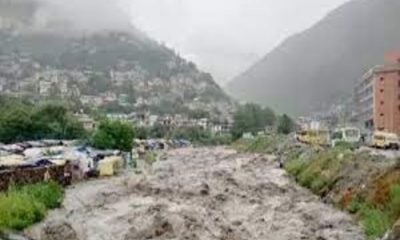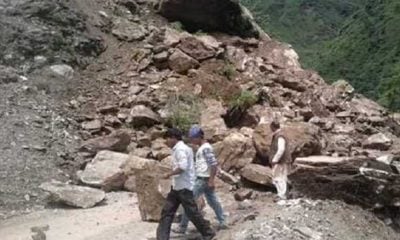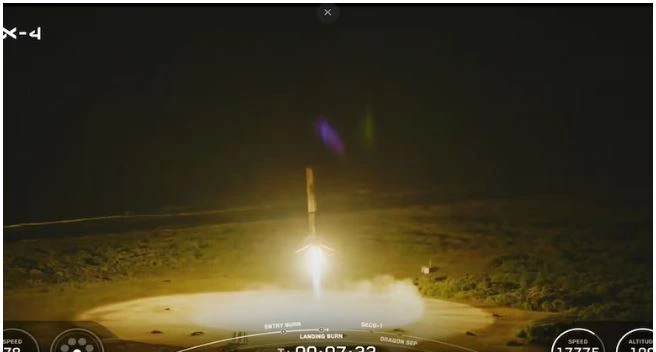~By Raghu Murtugudde
The mountain range that runs along the west coast of peninsular India from Tamil Nadu through Kerala, Karnataka, and Goa to Maharashtra is known as the Western Ghats and is very well known for its majestic beauty. It is also among the top eight biodiversity hotspots in the world. The Western Ghats host over 400 species and 7 distinct vegetation types.
The Western Ghats are often in the news due to constant threat to their biodiversity. Forest cover has declined by up to 50% in parts of Uttara Kannada district of Karnataka and the evergreens in Kerala are facing a threat of extinction. The overall deforestation is reported to be accelerating over recent decades. In the meantime, water distribution remains a contentious issue among states in the region. What has not been understood clearly is just how critical a source of moisture the greenery of the Western Ghats is for some of the water-stressed states.
The Ghats run perpendicular to the moisture-laden southwest monsoon winds gusting in from the Arabian Sea, forcing the winds to climb the mountain range to get over to the other side. This climb leads to an expansion of the winds since pressure decreases with height in the atmosphere and the expansion leads to a cooling and thus condensation of the moisture, resulting in annual rainfall ranging from 2000 mm to nearly 7800 mm. If you are hiking the Ghats during the rainy season and happen to catch one of the break periods in the monsoon, then you will see water vapor pouring out of lush green vegetation like steam over a hot cup of coffee.
Studies on the impact of deforestation have mostly focused on the Amazon and the results have shown dramatic local and remote effects of deforesting the Amazon. It turns out that the loss of vegetation over the Ghats also would have detrimental effects on rainfall over India. A study focused on this issue led by Supantha Paul under guidance of Subimal Ghosh at IIT-Bombay, of which this author is also a contributor, is appearing in scientific journal Geophysical Research Letters.
In this study, a regional atmospheric model which includes the representation of land and vegetation has been employed to conduct monsoon simulations for the period 1990-2015. A regional model can be computationally efficient due to its limited simulation domain and can be run at relatively high grid resolutions compared to the global climate models. This high grid resolution allows features like the Western Ghats and their vegetation types as well as agricultural and urban landscapes over the rest of India, to be represented more accurately compared to relatively lower-resolution global models. The leaf and stem area and canopy heights of vegetation and their evapotranspiration and energy exchange with the atmosphere are captured accurately by the model. The model simulations can then be performed with all the vegetation included and by denuding the Western Ghats partially or totally.
The simulation period chosen includes sufficient number of seasons, active/break periods as well as normal and deficit monsoon years to allow us to confidently assess the moisture contribution of the Western Ghats vegetation to rainfall over interior India. Earlier studies on moisture sources for the Indian monsoon led by Amey Pathak of IITB had pointed out that the vast Ganga basin with its river water and agricultural activities, acts not only as a major source of moisture for itself in terms local evaporation and recycled rain but also as a significant supplier of moisture for rain over northeast India.
The new study points out that the evapotranspiration from the vegetation over the Western Ghats accounts for one quarter of the rainfall over peninsular India. This is highly significant. For example, Tamil Nadu receives a total annual rainfall of 960 mm but only 33% of that falls during the summer monsoon. The summer rainfall is thus critical for the Kharif crop season over Tamil Nadu.
The monsoon occurs in weeks of rain known as the active period followed by several days or weeks of mini-droughts known as the break period. Model simulations show that the moisture supply from the Western Ghats is critical during the break period since it accounts for up to 50% of the total rainfall over the state of Tamil Nadu. The evergreen broadleaf forests in the southern Western Ghats are a significant bucket of moisture for rainfall over Tamil Nadu.
The monsoon during 1993, 1999 and 2002 were severely deficient over Tamil Nadu and the Kaveri basin. Model simulations attribute up to 50% of the rainfall during these deficit years to be due to the moisture supplied by the Western Ghats. It is clear that the thick vegetation cover over the Ghats accumulates moisture and acts like a capacitor to release the moisture to peninsular India during dry periods – be they the mini-droughts or break periods during a normal monsoon or the extended break periods associated with drought years.
The study also shows that any reduction in rainfall due to deforestation of the Western Ghats would lead to a warming of peninsular India as well. This can be expected since the monsoon rains typically bring a significant cooling over India by dragging down the dry cool air from the upper atmosphere. This cooling is a lifesaving relief from the scorching pre-monsoon temperatures and heatwaves.
Continued deforestation is of great concern for the ecological community due to the loss of precious flora and fauna. This study puts a finer point on the value of the Western Ghats biodiversity as a significant source of moisture for rainfall over parts of India that are constantly struggling for water for agriculture as well as domestic and industrial use. The battle cry for protecting biodiversity hotspots and the overall forest cover over the Western Ghats just got louder. (India Science Wire)
The author is a Professor at the Earth System Science Interdisciplinary Center, University of Maryland and a visiting faculty at IISER, Pune and IIT, Bombay.


 Latest world news12 hours ago
Latest world news12 hours ago
 India News9 hours ago
India News9 hours ago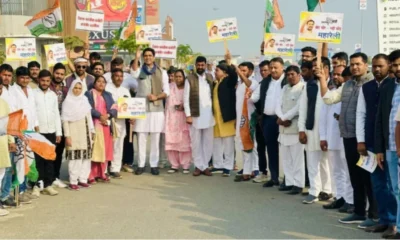
 India News8 hours ago
India News8 hours ago
 India News6 hours ago
India News6 hours ago
 India News6 hours ago
India News6 hours ago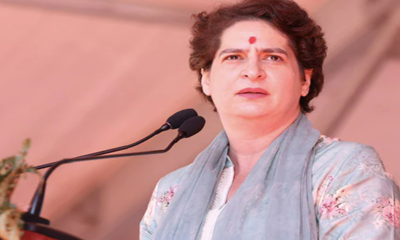
 India News3 hours ago
India News3 hours ago


